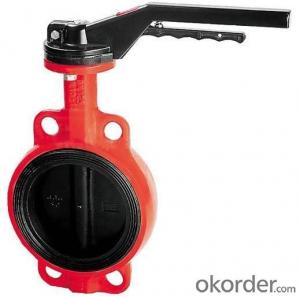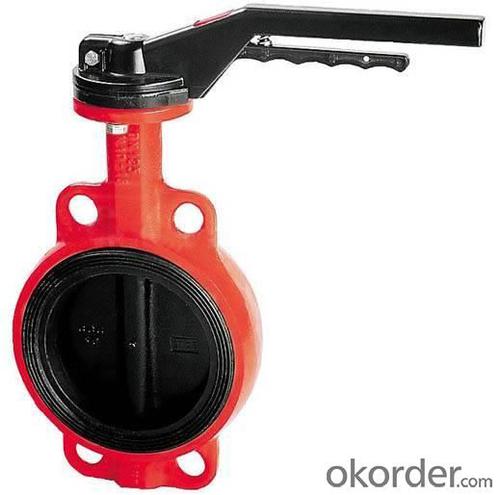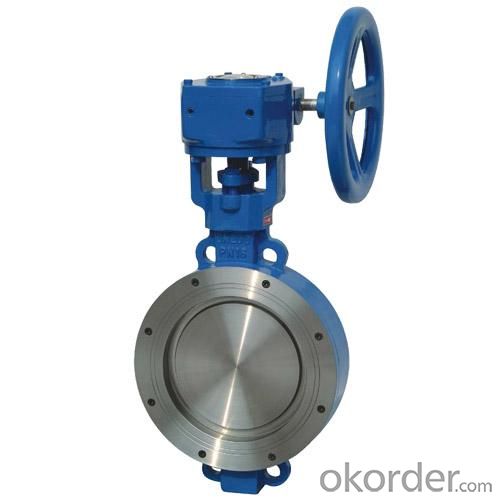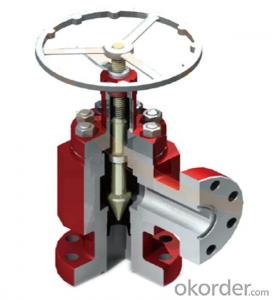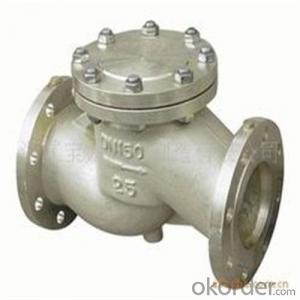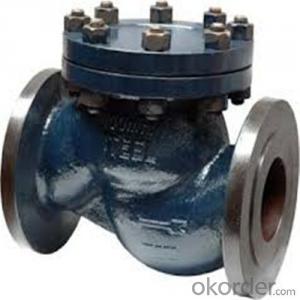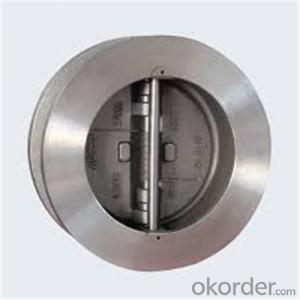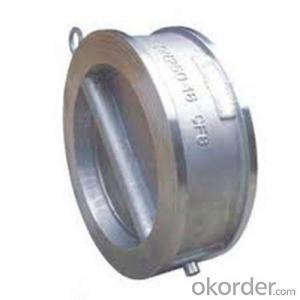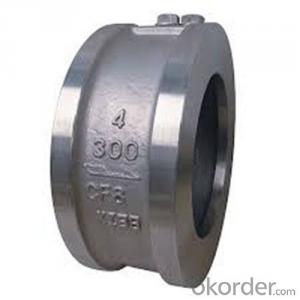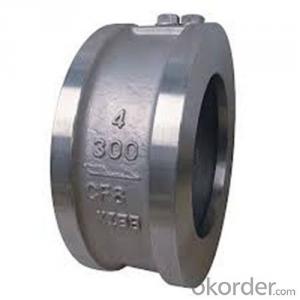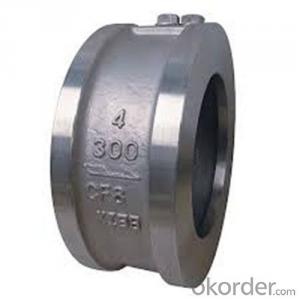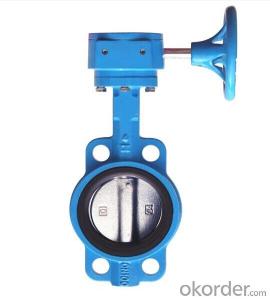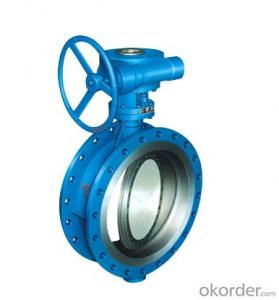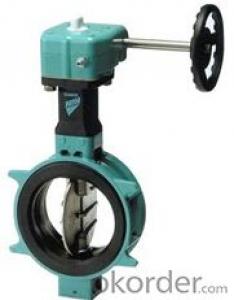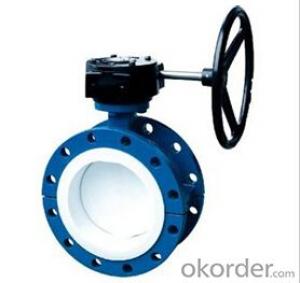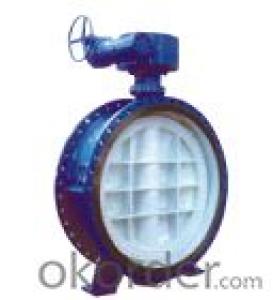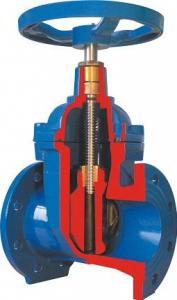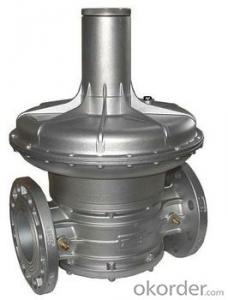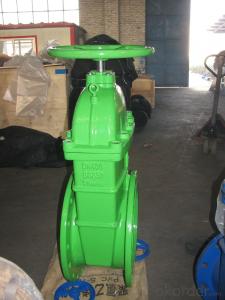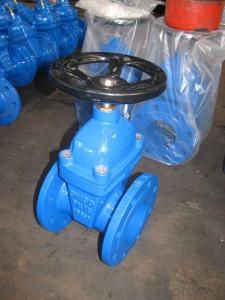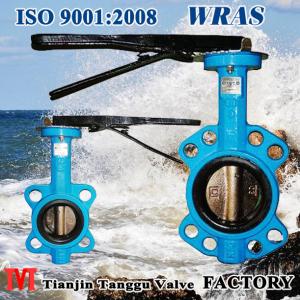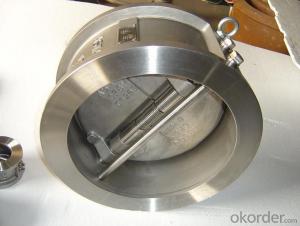Butterfly Valve DN700 Turbine Type with Hand wheel BS Standard
- Loading Port:
- China main port
- Payment Terms:
- TT OR LC
- Min Order Qty:
- 1 set
- Supply Capability:
- 5000 set/month
OKorder Service Pledge
OKorder Financial Service
You Might Also Like
1. Manual Wafer Butterfly Valve Description:
A butterfly valve is a valve which can be used for isolating or regulating flow. The closing mechanism takes the form of a disk. Operation is similar to that of a ball valve, which allows for quick shut off. Butterfly valves are generally favored because they are lower in cost to other valve designs as well as being lighter in weight, meaning less support is required. The disc is positioned in the center of the pipe, passing through the disc is a rod connected to an actuator on the outside of the valve. Unlike a ball valve, the disc is always present within the flow, therefore a pressure drop is always induced in the flow, regardless of valve position.
2.Main Features of the Manual Wafer Butterfly Valve
1.Simple and compact construction. Small in size and light in weight. Easy transportation, installation and maintenance.
2. Quick 90 degrees on-off operation. Minimized operating torque ,energy saving.
3. Excellent sealing performance with no leakage. Long service life.
4. Wide selection of materials ,applicable for various media..
5. Flow curve tending to straight line. Excellent regulation performance.
6. Long service life, standing the test of tens of thousands opening/closing operations
7. Bubbles-tight sealing with no leakage under the pressure test
3. Manual Wafer Butterfly Valve Images:
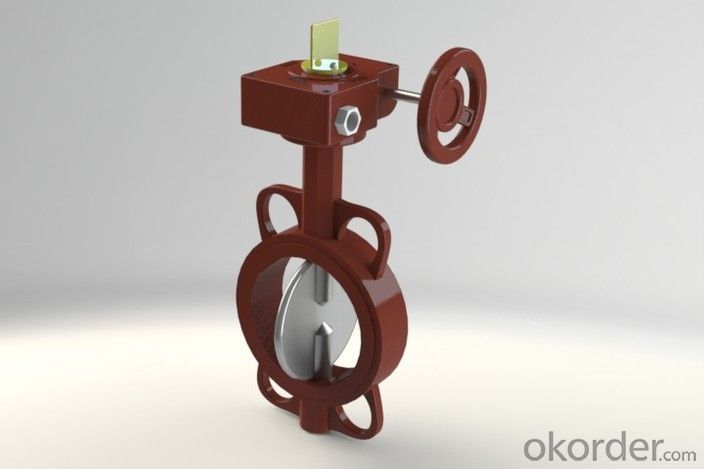
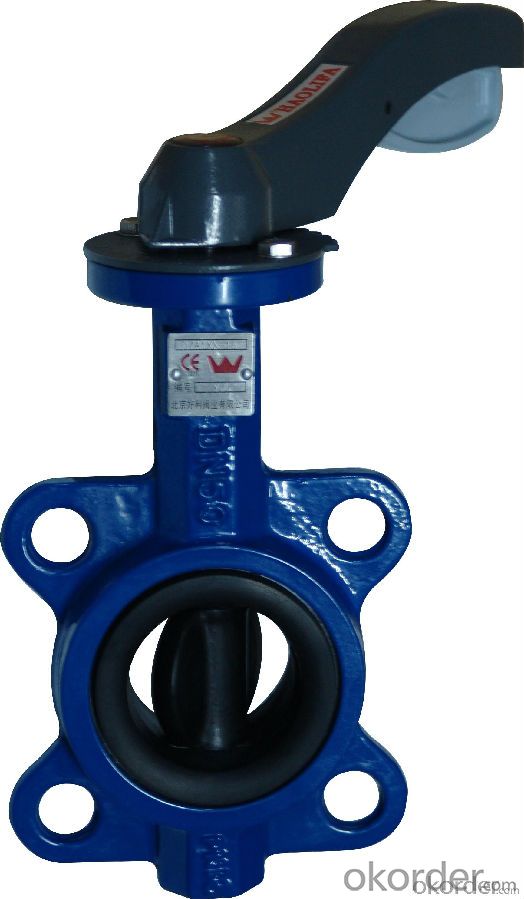
4.Manual Wafer Butterfly Valve Specification:
Size: | DN50-DN1000 |
End flange: | ANSI B 16.1,EN1092,AS2129 |
Face to face: | ANSI B 16.10 |
Top flange: | ISO 5211 |
Normal pressure: | PN1.0/1.6MPa(150/200PSI) |
Body: | CI/DI/WCB/ALB/CF8/CF8M |
Disc: | DI/ALB/Rubber lined Disc/1.2501/1.4529/CF8/Hastelloy Alloy/Monel |
Stem: | 410/416/304/431/17-4PH/316/monel |
Seat: | NBR/Hypalon/EPDM/Neoprene/NR/Wear-Resistant EPDM/Viton/Silicon/Heat-Resistant EPDM/White EPDM/EPDM(NSF)/PTFE |
Suitable temperature: | -10~120 |
Medium: | Fresh water, sewage, sea water, air, vapor, food, medicine, oils, alkalis, salt etc. |
5.FAQ
1. What is manual wafer butterfly valve?
A: Wafer style is the more common of the two and is less expensive than the lug style. The wafer style butterfly valve is just about the standard. It ís so common that no one even bothers to use the word "wafer" when ordering a butterfly valve. It is taken for granted that if a butterfly valve is ordered, a wafer style will be received.
2. How about the Installation of the Wafer Style Butterfly Valve?
A: Butterfly valves are installed by inserting the valve between two flanges using bolts or studs and nuts to hold it all together. This type of installation, of course, makes it impossible to disconnect just one side of the piping system from the valve. That benefit is received using the lug style valve.
3. What is the working principle of manual wafer butterfly valve?
A: A butterfly valve is from a family of valves called quarter-turn valves. In operation, the valve is fully open or closed when the disc is rotated a quarter turn. The "butterfly" is a metal disc mounted on a rod. When the valve is closed, the disc is turned so that it completely blocks off the passageway. When the valve is fully open, the disc is rotated a quarter turn so that it allows an almost unrestricted passage of the fluid. The valve may also be opened incrementally to throttle flow.
- Q: I got an engine knock and backifiring and no power not even to move the car just a few feet. I figured its the vales that are eather broken or burned out. I just started to take my top end apart to check and change borken or damaged valves so i can drive the car once again. My question is, when i take the valve cover off i can see what looks like the valves and the springs and something in the middle of the springs, now what iam i gona be looking at for a broken/damaged valve since i dont see any obvious damages but i could be wrong.
- take it in.
- Q: Chev 350 in marine use. Made horiffic exhaust noise, especially with increasing throttle. Cam seems fine still, but the rocker on #5 exhaust was somewhat off to the side but still touching the side of the valve stem...but stem bent. What would cause this and is this the cause of the loud combustion sound (like a spark plug out of it's hole?
- Do a compression check to be sure. Usually an exhaust valve will just allow to escape into exhaust. you may have other things going on, like an intake valve also. Do pressurized compression check to trace it.
- Q: what is the difference between mitral valve prolapes and mitral regurgitation?
- Mitral valve prolapse refers to a condition in which the leaflets of the valve are large and floppy compared to the average. When the ventricle contracts, the valve closes and the flow causes a pop as the floppy leaflet fills with blood, much like the way the wind fills a sail. This extra pop can be heard with a stethoscope (like a click) but it can often be felt by the person affected which makes them more aware of their heartbeat than the rest of us. Mitral Valve regurgitation is a condition in which the mitral valve leaks after it is closed leading to a loss of efficiency of blood pumping and a drop in blood pressure. It is often a small leak and is of little consequence and is often associated with mitral valve prolapse. This leak can sometimes be heard with a stethoscope as a murmur under the left arm. The combination of both situations is known as Barlow's click-murmur syndrome. Old Doc
- Q: I opened the OPD valve on the BBQ propane tank and propane spray out, I have heard that propane should come out only when it is hooked. Is there something wrong with the propane tank?
- == it is correct that when the valve is opened without being attached to the BBQ machine it will spew propane gas into the air .... the tank is fine and you noticed the foul odor to the gas and that is put into the gas so you can detect that there might b
- Q: My pressure reducing valve has gone bad. This looks like a pretty simple change. My question is do i loosen the union nut first (after draining water line), then loosen the whole valve??? Then reverse to install??? Any info would be great....
- Yup. That's pretty much it. Loosen the union a little, unscrew the valve from the non union side, then take the union completely loose and remove the valve. Last thing is to remove the other half of the union from the pipe. Always use the complete new union that comes with the new pressure regulator.
- Q: I recently adjusted the valves and put new valve covers on my bug and now I have a leak around the fron corner of one of my valve covers. What happened? What can I do?
- new seals + get rid of the cheapo chrome repros and put OEM covers back on.
- Q: im just bored so heres my question who do you think is better valve games (hl2 tf2 css) or bungie games (halo) and why. whoever gives me the best reson gets best answer. personally i like valve
- 0.5 existence and 0.5 existence 2 are extra beneficial video games than Halo a million/2/3. whether im not a huge fan of the definitely gameplay in Valves video games. I choose Halo's engine over Valves. whether, Portal is an marvelous interest. That on my own places Valve over Bungie.
- Q: this question is related to Ball valves, In actuated valve for the selection of actuator we need differential pressure across the valve so I wanted to know that what is meant by differential pressure?
- When you have a valve with an actuator there is a need to know the pressure differential that can exist across the valve either in the closed position, the closing or opening step. This is because that adds an additional force that the actuator must be able to handle. In the case of a gate or ball valve, this force comes from the fact that the differential pressure tries to push the ball or gate toward the lower pressure direction and that jams the ball or gate against the downstream seat. Differential pressure is simply the up stream pressure minus the down stream pressure. Usually it is calculated when the valve is fully closed since that tends to be the time of maximum differential pressure. Of course in some cases the highest differential pressure may exist just before the valve is fully closed and the two pressures have a chance to stabilize.
- Q: In one of the two bathrooms - that we rarely used - I recently found that shower has now only hot water running. The valve is Moen brand with a single knob. On turning this, I get no cold water, but just hot water. I removed the knob, and decided to maybe replace the cartidge, but could not make any headway, after removing the acrylic knob. First, do I need to remove the cartridge?If yes, how? Is it possible to remove it without removing the back-plate glued to the Tile walls? Will appreciate detailed instructions to remove or fix the valve?thanks
- Single Knob Shower Valve
- Q: Can anyone tell me what is the industrial application for globe valve?? Please help. I tried to search in the Net but couldn't get.
- The web page of the attached link has some good section drawings of the various valve types. Whereas ball and gate valves are designed as shut-off valves, and only operate efficiently fully closed or fully open, Globe valves, due to their internal design, can operate fairly efficiently in a partially open position to throttle or control the flow rate of liquids. They are used to control flow rates when mixing fluids or in batching operations where the fluid flow may need to continuously adjusted. The valves can be operated manually or automatically depending on the process.
Send your message to us
Butterfly Valve DN700 Turbine Type with Hand wheel BS Standard
- Loading Port:
- China main port
- Payment Terms:
- TT OR LC
- Min Order Qty:
- 1 set
- Supply Capability:
- 5000 set/month
OKorder Service Pledge
OKorder Financial Service
Similar products
Hot products
Hot Searches
Related keywords
